In November of 2023, very exciting news came to light. A male tiger from Maharashtra, that had been captured on Wildlife Conservation Trust’s (WCT) camera traps in Brahmapuri in 2021, had travelled nearly 2,000 km. and had been spotted in Odisha. It had crossed four states in his pursuit for a mate and safe territory. According to reports, the tiger would have had to cross agricultural fields, roads, human settlements, among other manmade obstacles on this long, perilous journey.
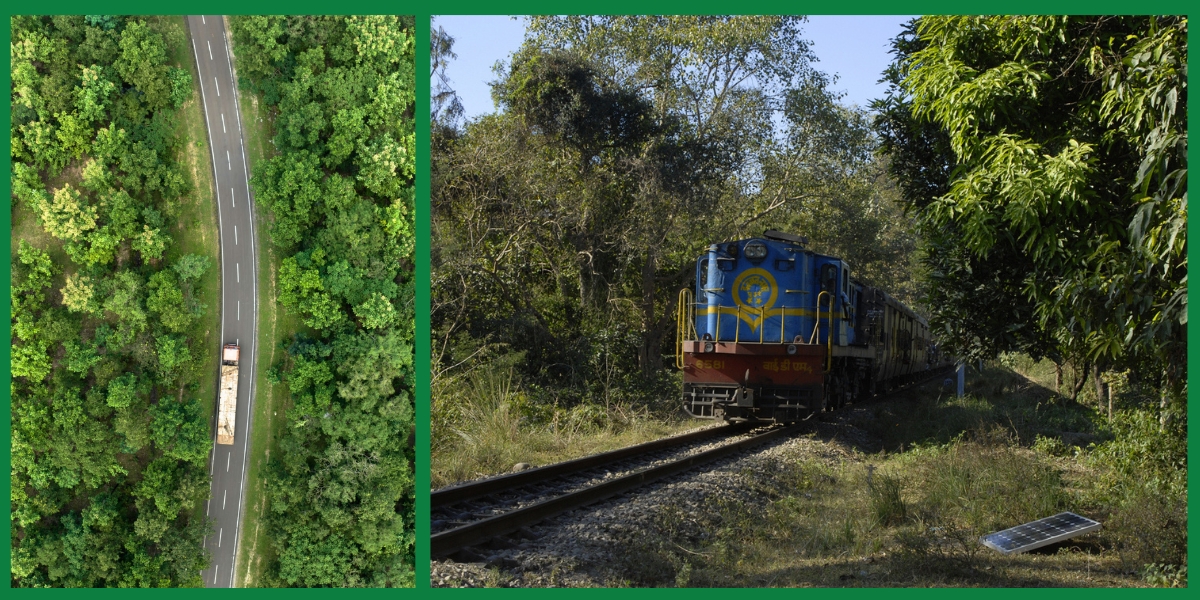
Linear infrastructure such as roads and railway lines running through wildlife habitats can severely hamper wildlife connectivity. © WCT ©Dr. Anish Andheria
This tiger was lucky. For it could easily have been hit by a vehicle on the road, rundown by a train while crossing a railway line, found itself in a hairy situation with humans, or could have been poached, electrocuted, or could have fallen and drowned in a canal or an open well.
This incredible long-distance dispersal event well highlights the importance of maintaining habitat connectivity, protecting wildlife corridors, and strengthening protection, to ensure a safe passage not just for tigers, but other wild animals as well.
In recent times, connectivity and corridors have become the buzzwords in conservation parlance.
And rightfully so.
Picture a group of islands in the ocean.
The sea water acts as a barrier preventing the movement of most animals between these islands. These islands become isolated pockets of biodiversity with little to no connectivity between them.
Now replace the sea water with a sea of humans and human habitation – settlements, farmlands, roads, railway lines, mines, canals, industries, and other infrastructure.
You are picturing a fragmented landscape with hampered connectivity which impedes animal movement.
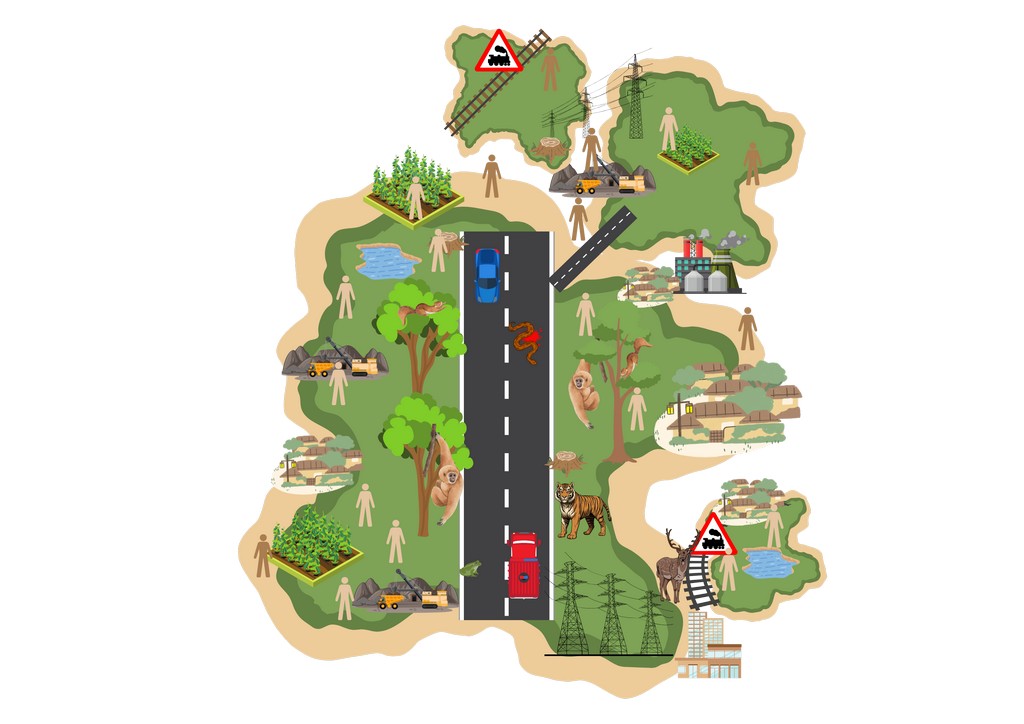
Anatomy of a fragmented landscape. ©Purva Variyar
And animals need to move. They move across various distances to seek mates, food, and establish territories of their own.
Interconnectedness between natural habitats and animal populations is the lifeblood of ecosystems.
The importance of ecological connectivity to stem biodiversity loss cannot be overstated.
But what is ecological connectivity?
The Convention on the Conservation of Migratory Species of Wild Animals, CMS for short, defines ecological connectivity as the “unimpeded movement of species and the flow of natural processes that sustain life on Earth.”
When larger and contiguous stretches of natural habitats are broken up due to human activities, what remains are smaller areas or patches of isolated wildlife habitats, disconnected from each other. This is called as ‘fragmentation’.
Animals need to move in order to feed, mate, disperse, mark territory, escape predators or natural calamities. Wide-ranging species such as tigers, elephants, and leopards move hundreds of kilometers within their ranges. A tiger population for example, requires an area of 800-1,000 sq. km. to be viable.
Now get this. Only 5 percent of India’s geographical area makes up the country’s protected area network. And not all of India’s wildlife live within the boundaries of these protected areas. A large percentage of wild animals live and move outside them. About 65 percent of these protected areas are less than 100 sq. km. in size.
So what does this mean for wide-ranging, as well as other animals? What are the ecological repercussions of fractured connectivity?
Take the tiger population of the Ranthambhore Tiger Reserve, in Rajasthan, India. Shrinking habitat and human disturbance in and around the tiger reserve has fragmented the landscape to the point that the tiger reserve now harbours an isolated population of tigers. Scientists at the National Centre for Biological Sciences, Bengaluru, who have performed genetic studies on the Ranthambhore tigers warn of the very serious dangers of inbreeding which could potentially wipe out the entire population! They found genetic diversity in this tiger population to be very low due to lack of inflow of tigers from outside.
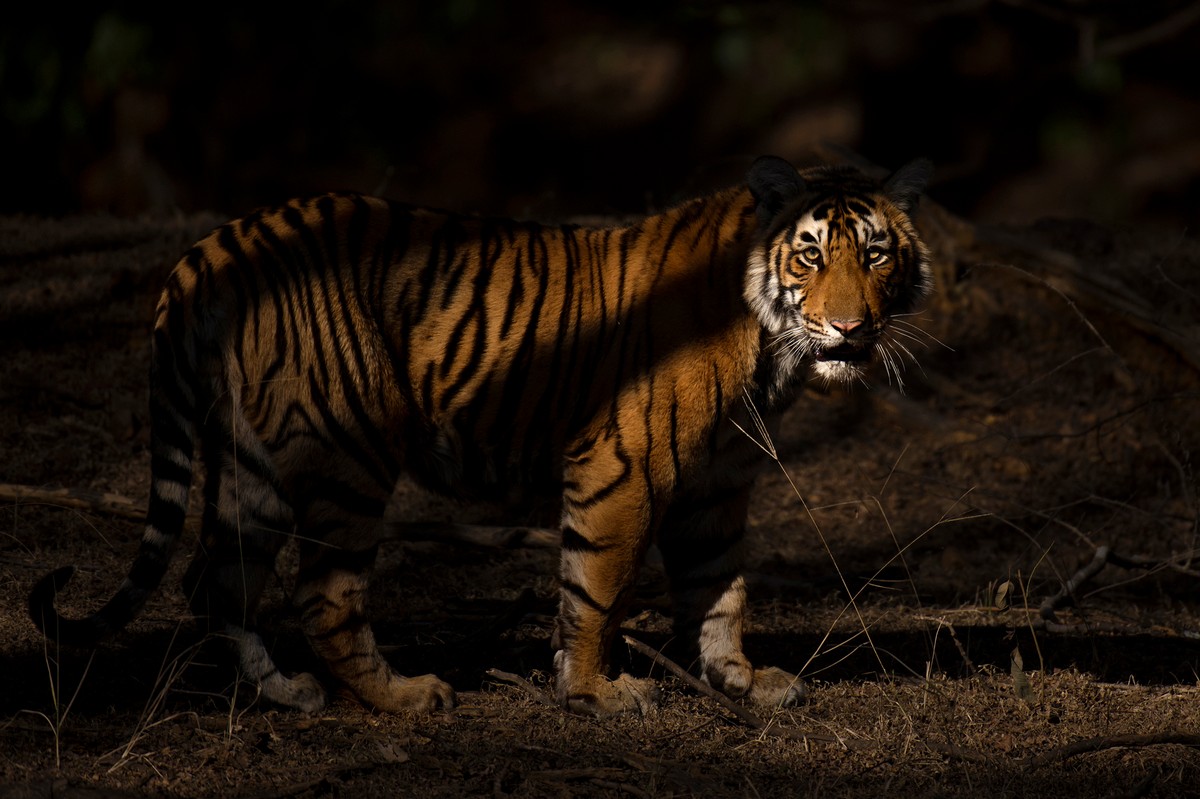
The tiger population in Ranthambhore Tiger Reserve is rather isolated due to fragmentation. © Late Aditya ‘Dicky’ Singh
Recent studies have also shown that the extinction rate of tigers in small Protected Areas can be reduced by 70 percent just by securing adjacent forest areas and corridors. This highlights the importance of landscape connectivity for the long-term survival of tigers.
This is where wildlife corridors come in.
In simple terms, a corridor is a relatively narrow strip of any natural habitat, such as forest, that has managed to survive and is still suitable for wild animals to use and move between two or more larger forest blocks. These corridors keep forests from turning into isolated islands of biodiversity.
One of the growing and highly concerning threats to animal movement and connectivity is the rapidly expanding linear infrastructure such as roads, railway lines, power lines, etc.
Geographer Edward L. Ullman once said, “Few forces have been more influential in modifying the earth than transportation.”
You may wonder how a single highway or a railway line cutting through a forest can cause fragmentation and biodiversity loss. After all, very little wildlife area needs to be diverted, area wise, for a road or railway line to be built. Animals can cross the roads if they want. So, what is the big deal?
Well, it is not so simple.
The negative effects of road networks on the natural ecosystems run deep. They are deceptively disproportionate to the wildlife areas that need to be diverted for building them. Landscape fragmentation, animal roadkills, induced behavioral changes in animals, and disruption of animal migratory paths are serious threats and often difficult to quantify.
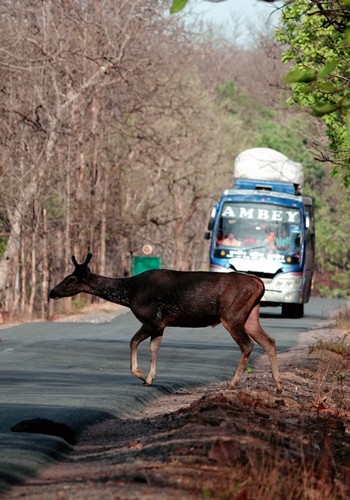
Collision with speeding vehicles on the roads lead to innumerable wildlife deaths globally. ©WCT
Countless wild animals die on the roads every year. In one study, scientists gathered data on 150 mammal populations and 69 species from around the world and found that roadkill was the most common cause of death in nearly a third of the animal populations. In some of these populations, 80 percent of all deaths were due to collisions with vehicles.
A vast majority of wild animal deaths on roads and railway lines go unrecorded in India. Deaths of animals like leopard, tiger, and elephant may get recorded. But, for every large mammal killed by a vehicle, thousands of smaller mammals, amphibians, reptiles, and birds die on the roads and railway lines every year.
Data collected by WCT in the Kanha-Pench Corridor in central India, revealed that the National Highway-44 was not only leading to wildlife roadkills, but also influencing the behaviour of tigers in the area, and impacting their territorial decisions. The Kanha-Pench Corridor is crucial for maintaining connectivity between the Kanha and Pench Tiger Reserves. But linear infrastructure projects such as the expansion of NH-7 (now called NH-44 after expansion), and other development projects threaten this critical tiger corridor.
WCT’s data also suggested that by building underpasses, connectivity would actually improve! And it has. After a long-fought battle between wildlife organisations and development agencies, 21 underpasses of varying lengths viz. 100, 300, 700, and 1400 meters, which is the world’s longest mitigation structure for a large mammal, was finally built on NH-44. Remote camera traps reveal how wild animals from tigers, leopards, sloth bears, gaur, spotted deer, to wild dogs, and more, continue to use these underpasses safely.
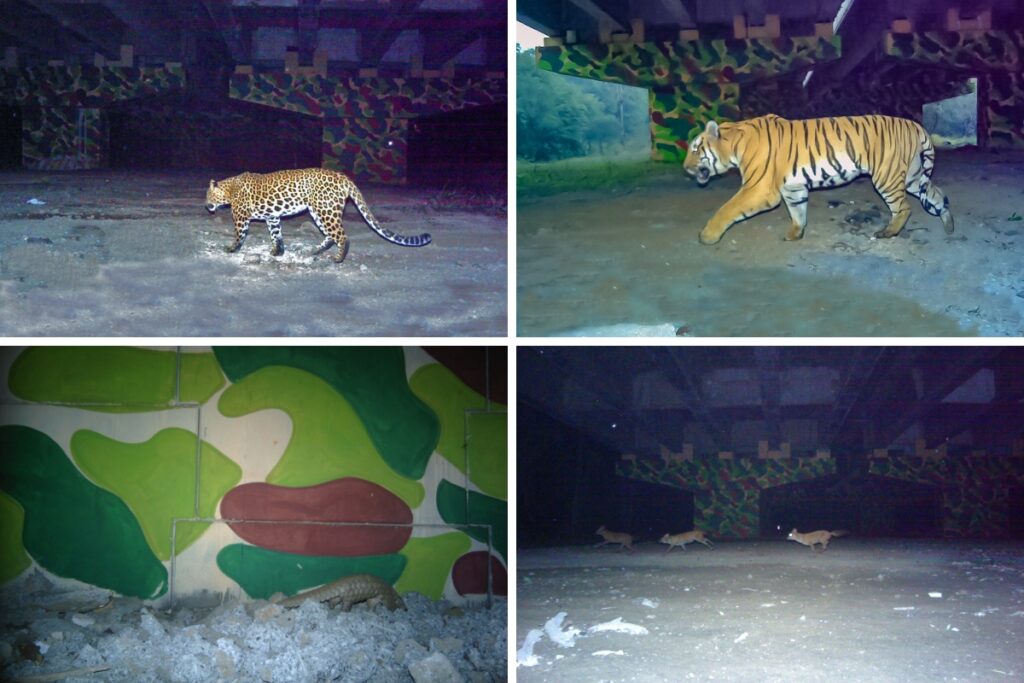
WCT’s camera traps have captured several species using the underpass on NH-44 including (clockwise from top) Indian leopard, Bengal tiger, Indian pangolin, and Asiatic wild dog (dhole). ©WCT/MPFD
And if you thought only terrestrial animals were impacted by fragmentation due to linear infrastructure, think again. A single gauge railway track that passes through the Hollongapar Gibbon Sanctuary in Assam has fragmented this important ecological habitat of the endangered Hoolock gibbon, India’s only ape species! Furthermore, plans to electrify this railway track which is part of the Mariani-Dibrugarh railway line could further jeopardise the ease of movement for this arboreal primate, which rarely ever ventures on to the ground and needs good tree canopy connectivity to move about. Efforts are on to build artificial and natural canopy bridges to enable the movement of hoolock gibbons, as are the efforts to convince the Indian Railways to reroute this stretch of the railway track outside the Hollongapar Gibbon Sanctuary in order to restore the ecological connectivity and integrity of the Sanctuary that is also home to six other primate species.
Now you know why wildlife conservationists and experts the world over unanimously emphasise the need to maintain structural and functional habitat connectivity, and protect and restore ecological corridors. After all, animals too have the right of way.
About the author:
Purva Variyar is a wildlife conservationist, science writer and editor, and heads WCT’s Communications vertical. She has previously worked with the Sanctuary Nature Foundation, and The Gerry Martin Project.
Disclaimer: The author is associated with Wildlife Conservation Trust. The views and opinions expressed in the article are her own and do not necessarily reflect the views and opinions of Wildlife Conservation Trust.
Your donations support our on-ground operations, helping us meet our conservation goals.
Related Links
- Connectivity Conservation
- Ecological Connectivity in the Age of Economic Corridors
- Roads To Nowhere – Roadkills – A Citizen Science Initiative
- The Curious Case of India’s Wildlife Corridors
- Connectivity Conservation and the Need for Science Based Policy
